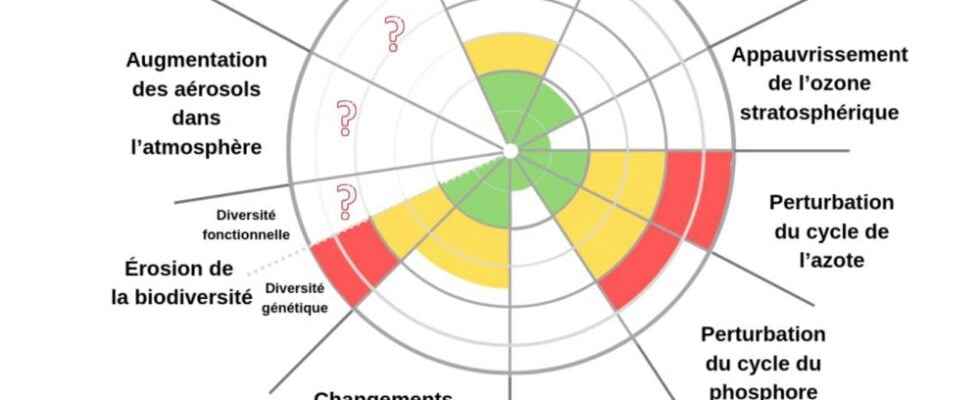Day after day, month after month, alerts are multiplying on the environmental front. “The rate at which societies produce and release new chemicals and other new entities into the environment does not allow us to remain in a safe operating space for humanity”, explains scientist Patricia Villarubia-Gómez, on the website of Stockholm Resilience Center (SRC).
The subject of this dramatic observation: a study published on January 18 in the review Environmental Science & Technology, and co-created with an international team of researchers. The SRC indicates there that the production of chemicals has multiplied by 50 since 1950, and that it is expected to triple again by 2050. In more detail, the production of plastics alone increased by 79% between 2000 and 2015. “The total mass of plastics on the planet is now more than double the mass of all living mammals, and around 80% of all plastics ever produced remain in the environment,” the Center further observes.
As a result, scientists are adamant: a new planetary boundary, that applying to chemical pollution (“introduction of new entities into the biosphere” on the graph below), has just been passed. It is the fifth, out of the nine that the planet would have according to a concept popularized in 2009 by the director of the SRC himself, the climate expert Johan Rockström.
What are the known planetary boundaries?
They are therefore nine in number, and concern climate change, biodiversity loss, global disturbances of the nitrogen and phosphorus cycle, land use, ocean acidification, depletion of the ozone, atmospheric aerosols, the use of fresh water and chemical pollution (the introduction of new entities into the biosphere). Each has indicators, under which living conditions on Earth remain favorable, and would not pose a risk to the oceans and seas, soils, and of course, humans. For the erosion of biodiversity, for example, the annual rate of extinctions must be less than 10 extinctions per million species.
At the time of the creation of the concept, recognized by the European Commission and the United Nations, three were already outdated: those of the disruption of the cycle of nitrogen, phosphorus, as well as part of the erosion of biodiversity. It should be noted that for several of them, the situations had not been quantified. This is why, after an in-depth study of “new entities in the biosphere”, scientists from the Stockholm Resilience Center claim that this limit has now been crossed, and exposes humanity to serious dangers. Finally, the limit relating to climate change has also been exceeded. Since the end of the 19th century, the global average temperature has increased by more than 1°C. The chosen indicator, the concentration of CO2, in ppm (parts per million) amounted in 2020 to 413.2 ppm, or 149% of the pre-industrial level.
The nine planetary boundaries. At the time of the creation of this concept, three were already outdated. Two have since been added: climate change and the introduction of new entities into the biosphere.
ree.developpement-durable.gouv.fr
A handful of criticisms exist: the limits set are global and make no distinction between countries or areas of the world, between the most polluting, and those most affected by these overruns, which are not necessarily the same. Then, it is difficult to fully measure the consequences of threshold crossings. The reactions of the planet remain unpredictable.
Why is this new crossing important?
More than half of the Earth’s boundaries are now threatened. And most, with the possible exception of ozone depletion – made famous by the famous “hole” metaphor now under control – are under stress. Above all: several figures were missing so far, in particular on this number of new entities (chemical substances, plastics, nanomaterials, etc.), introduced by man.
“There are an estimated 350,000 different types of manufactured chemicals on the global market. These include plastics, pesticides, industrial chemicals, chemicals in consumer products, antibiotics and other pharmaceuticals, now lists the SRC. These are all totally new entities, created by human activities and whose effects on the Earth system are largely unknown. Significant volumes of these new entities enter the environment every year .”
Scientists have found that these releases into the environment are increasingly massive. And admitted that an overrun was effective, since at the speed at which this phenomenon is progressing, “the ability of governments to assess global and regional risks, and even less to control any potential problem” is called into question, according to Bethanie Carney Almroth of the University of Gothenburg, and co-author of the study.
Each year, for plastic alone, between 5 and 13 million tonnes end up in the oceans, according to the Ministry of Ecology. According to the UN, this quantity is expected to triple by 2040. The world is suffocating under chemicals and plastics, and this phenomenon seems irreversible. “Even if we were to stabilize or reduce production and releases, its effects (…) will still pose a threat due to the persistence of many new entities,” say the SRC scientists in their work.
This crossing will still have a merit: that of progressing towards the creation of a ceiling on the production and rejection of these new entities in the environment. Salvation for the preservation of the planet will then lie in the mobilization of nations and governments, until now, alas, far from sufficient.
